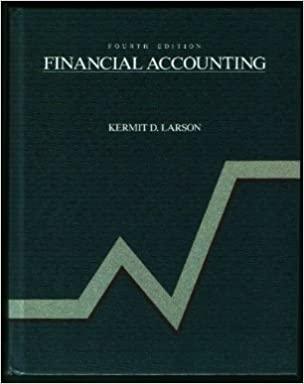Measures of liquidity, Solvency, and Profitability
The comparative financial statements of Marshall Inc. are as follows. The market price of Marshall common stock was $ 62 on December 31, 20Y2.
Required:
Determine the following measures for 20Y2, rounding to one decimal place, except for dollar amounts, which should be rounded to the nearest cent. Use the rounded answer of the requirement for subsequent requirement, if required. Assume 365 days a year.
| 1. Working capital | | |
| 2. Current ratio | | |
| 3. Quick ratio | | |
| 4. Accounts receivable turnover | | |
| 5. Number of days' sales in receivables | | |
| 6. Inventory turnover | | |
| 7. Number of days' sales in inventory | | |
| 8. Ratio of fixed assets to long-term liabilities | | |
| 9. Ratio of liabilities to stockholders' equity | | |
| 10. Times interest earned | | |
| 11. Asset turnover | | |
| 12. Return on total assets | | |
| 13. Return on stockholders equity | | |
| 14. Return on common stockholders equity | | |
| 15. Earnings per share on common stock | | |
| 16. Price-earnings ratio | | |
| 17. Dividends per share of common stock | | |
| 18. Dividend yield | | |




Measures of liquidity, Solvency, and Profitability The comparative financial statements of Marshall Inc. are as follows. The market price of Marshall common stock was $ 62 on December 31, 20Y2. Marshall Inc. Comparative Retained Earnings Statement For the Years Ended December 31, 20Y2 and 2041 2012 2011 Retained earnings, January 1 $1,568,300 $1,328,700 Net income 336,000 272,200 Dividends: On preferred stock (5,600) (5,600) On common stock (27,000) (27,000) Retained earnings, December 31 $1,871,700 $1,568,300 2011 $1,859,340 707,870 $1,151,470 $500,740 Marshall Inc. Comparative Income Statement For the Years Ended December 31, 2012 and 2041 20Y2 Sales $2,018,085 Cost of merchandise sold 769,420 Gross profit $1,248,665 Selling expenses $412,750 Administrative expenses 351,605 Total operating expenses $764,355 Income from operations $484,310 Other revenue and expense: Other revenue 25,490 Other expense (interest) (128,000) Income before income tax expense $381,800 Income tax expense 45,800 294,090 $794,830 $356,640 22,760 (70,400) $309,000 36,800 Net income $336,000 $272,200 Marshall Inc. Comparative Balance Sheet December 31, 20Y2 and 20Y1 20Y2 2011 Assets Current assets: Cash $301,210 $322,640 Marketable securities 455,890 534,650 365,000 343,100 Accounts receivable (net) Inventories 277,400 219,000 56,988 64,530 $1,456,488 $1,483,920 1,216,572 407,409 1,920,000 1,728,000 $4,593,060 $3,619,329 $441,360 $491,029 Prepaid expenses Total current assets Long-term investments Property, plant, and equipment (net) Total assets Liabilities Current liabilities Long-term liabilities: Mortgage note payable, 8% Bonds payable, 8% Total long-term liabilities Total liabilities Stockholders' Equity Preferred $0.70 stock, $40 par Common stock, $10 par Retained earnings Total stockholders' equity $720,000 $0 880,000 880,000 $1,600,000 $2,041,360 $880,000 $1,371,029 $320,000 $320,000 360,000 360,000 1,568,300 1,871,700 $2,551,700 $2,248,300 Total liabilities and stockholders' equitv $4,593,060 $3,619,329 Total stockholders' equity $2,551,700 $2,248,300 Total liabilities and stockholders' equity $4,593,060 $3,619,329 Required: Determine the following measures for 20Y2, rounding to one decimal place, except for dollar amounts, which should be rounded to the nearest cent. Use the rounded answer of the requirement for subsequent requirement, if required. Assume 365 days a year. 1. Working capital 2. Current ratio 3. Quick ratio 4. Accounts receivable turnover 5. Number of days' sales in receivables days 6. Inventory turnover 7. Number of days' sales in inventory days 8. Ratio of fixed assets to long-term liabilities 9. Ratio of liabilities to stockholders' equity 10. Times interest earned 11. Asset turnover 12. Return on total assets % 13. Return on stockholders' equity % 14. Return on common stockholders' equity % $ 15. Earnings per share on common stock 16. Price-earnings ratio 17. Dividends per share of common stock 18. Dividend yield %










